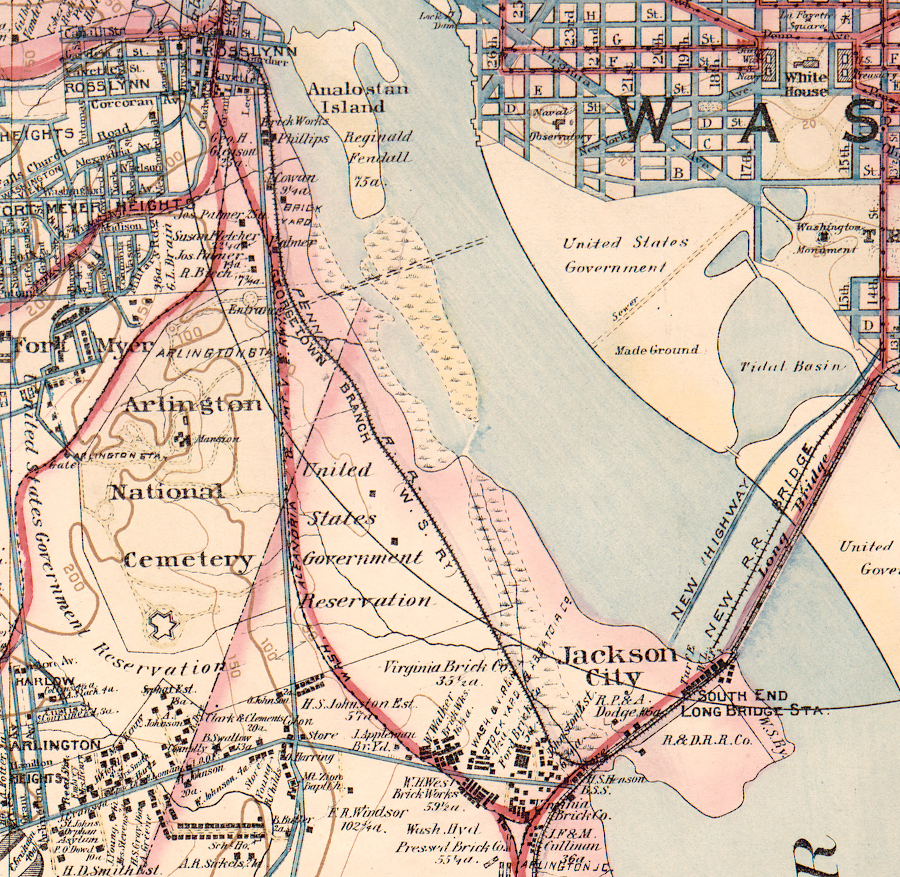
the Washington, Alexandria, & Mt. Vernon Electric Railway connected Rosslyn with Mount Vernon, starting in 1892
Source: Library of Congress, Baist's map of the vicinity of Washington D.C. (1904)

the Washington, Alexandria, & Mt. Vernon Electric Railway connected Rosslyn with Mount Vernon, starting in 1892
Source: Library of Congress, Baist's map of the vicinity of Washington D.C. (1904)
The Mount Vernon Construction Company and the Alexandria and Fairfax Passenger Railway Company were organized in 1892, and purchased 1,600 acres south of downtown Alexandria. They built a streetcar bridge across Great Hunting Creek at the mouth, one-half mile downstream from the existing Route 1 bridge. The route between Alexandria and Mount Vernon occupied one of the possible routes of a memorial highway, the focus of the Mount Vernon Avenue Association when it organized in 1887.
Streetcar operations began on September 18, 1892. The Washington Post reported:1
The turnaround at Mount Vernon was later repurposed as the turnaround for the George Washington Memorial Parkway.
The investors intended for the streetcar to provide access to a planned manufacturing suburb, New Alexandria. The Alexandria Gazette and Advertiser boosted its prospects, proclaiming it would be the "Coming Manufacturing Metropolis of the South."
The new community failed to develop, ending up as just a "paper city." Much of the land was ultimately developed as Belle Haven Country Club and the residential community around it.
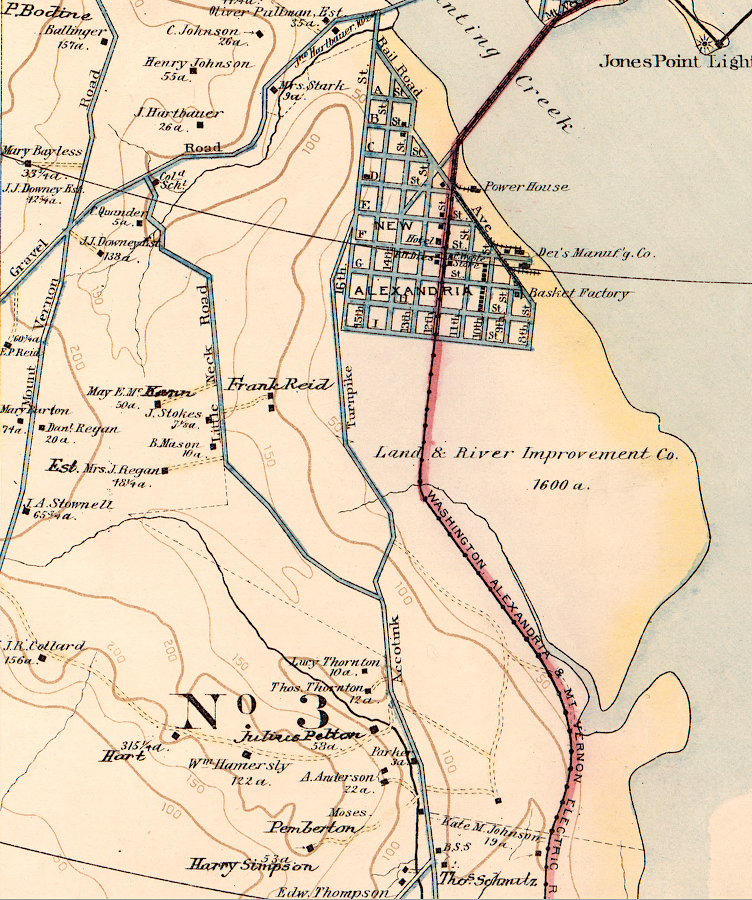
the streetcar line which opened in 1892 provided direct access to New Alexandria
Source: Library of Congress, Baist's map of the vicinity of Washington D.C. (1904)
The streetcar, renamed the Washington, Alexandria, & Mt. Vernon Electric Railway in 1894, thrived. It spurred development of the Del Ray and St. Elmo neighborhoods, populated by Potomac Yard workers.2
In 1896, the Virginia-based streetcar line connected into to Washington, DC, crossing Long Bridge and using the Belt Line Street Railroad Company's tracks. In 1902, the Virginia General Assembly extended the "Jim Crow" laws beyond steam-powered railways to include electric trolley lines. The state law required passengers to be seated in sections or separate cars segregated by race starting May 1, 1902. In cars of the Washington, Alexandria and Mount Vernon Electric Railway Company, the last five rows of seats were reserved for non-white ("colored") passengers.
On May 2, Mrs. L. M. McDonald sat in the front when she got in a car in Washington, DC. After the Washington, Alexandria, & Mt. Vernon Electric Railway train crossed Long Bridge into Virginia, the conductor directed the black school teacher to move to one of the back rows. She refused, and was then arrested and jailed overnight. The judge fined her $5, the minimum, since it was a first offense.
The Washington Evening Star reported the response of the mayor of Alexandria:3
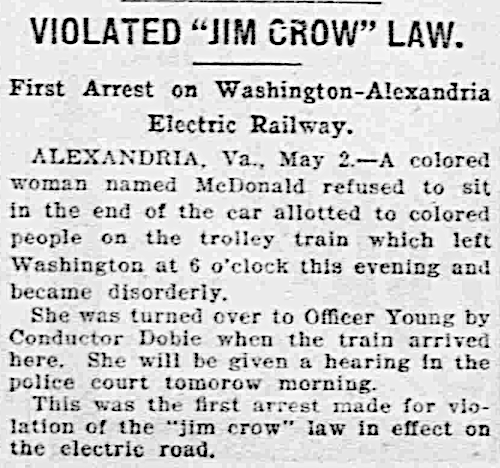
Washington, Alexandria, & Mt. Vernon Electric Railway enforced Virginia's new Jim Crow racial segregation law starting on May 2, 1902
Source: Library of Congress, The Evening Times (May 3, 1902, page 6)
In 1913, the Washington, Alexandria, & Mt. Vernon Electric Railway combined with the Washington, Arlington & Falls Church Railway and the Washington-Virginia Railway. The merged companies were renamed the Washington-Virginia Railway. According to the afternoon paper News Leader in Richmond:4
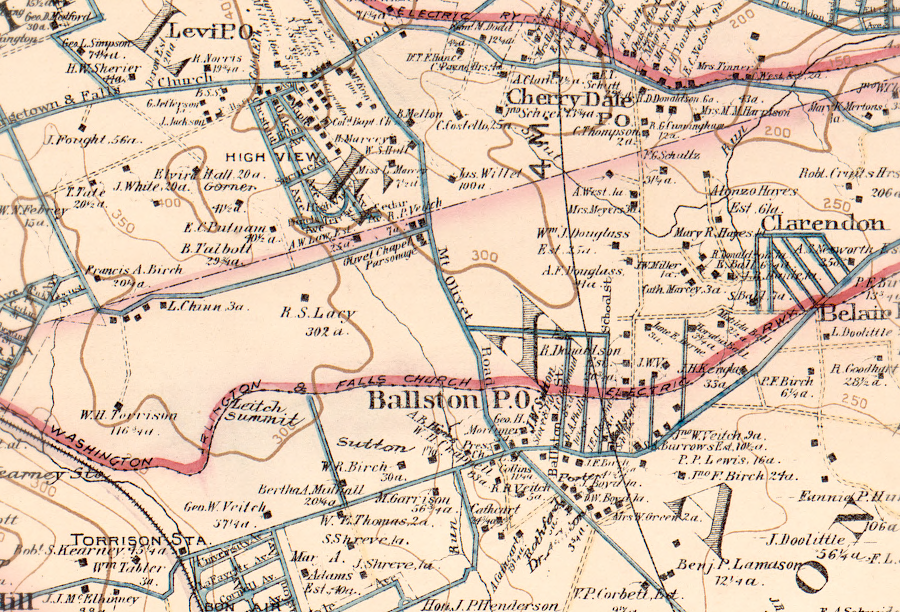
the Washington, Arlington & Falls Church Railway was consolidated with the Washington, Alexandria, & Mt. Vernon Electric Railway between 1913-1927
Source: Library of Congress, Baist's map of the vicinity of Washington D.C. (1904)
The popularity of bus service after World War I cut into the revenue of the trolley lines. The Washington-Virginia Railway went bankrupt in 1923. When sold by the trustees in 1927, the Washington-Virginia Railway was split.
The Washington, Alexandria, & Mt. Vernon Electric Railway became independent again, and the Washington, Arlington & Falls Church Railway was reorganized as the Washington, Arlington & Falls Church Railway.5
Development of Federal Triangle eliminated the depot within the District of Columbia. The stretch between Alexandria-Mount Vernon was forced to close by construction of the George Washington Memorial Parkway. Service on the Washington, Alexandria, & Mt. Vernon Electric Railway ended on April 9, 1932.6
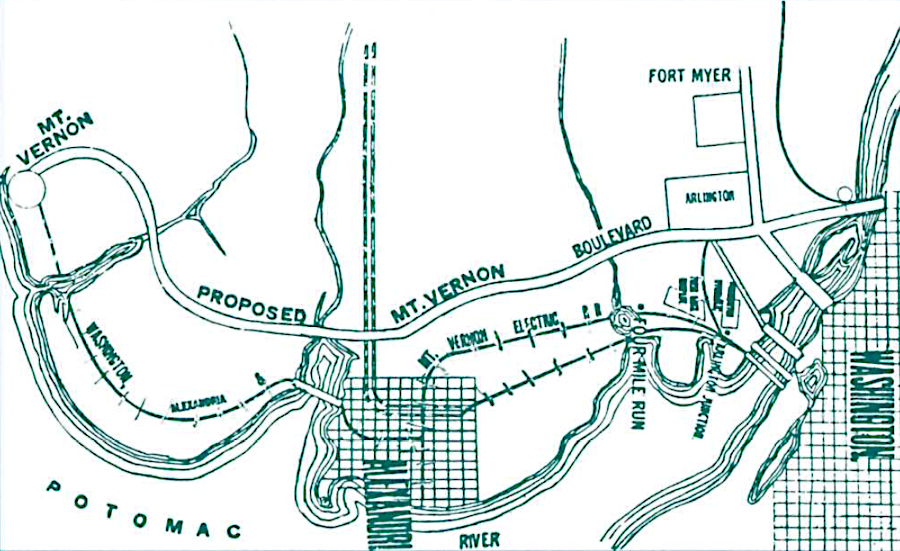
the George Washington Memorial Parkway forced removal of the trolley line between Alexandria-Mount Vernon
Source: National Park Service, Highways in Harmony
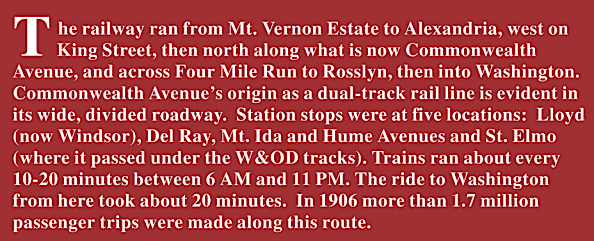
the Washington, Alexandria, & Mt. Vernon Electric Railway passed through the Town of Potomac on what is now Commonwealth Avenue
Source: City of Alexandria, The Electric Railway
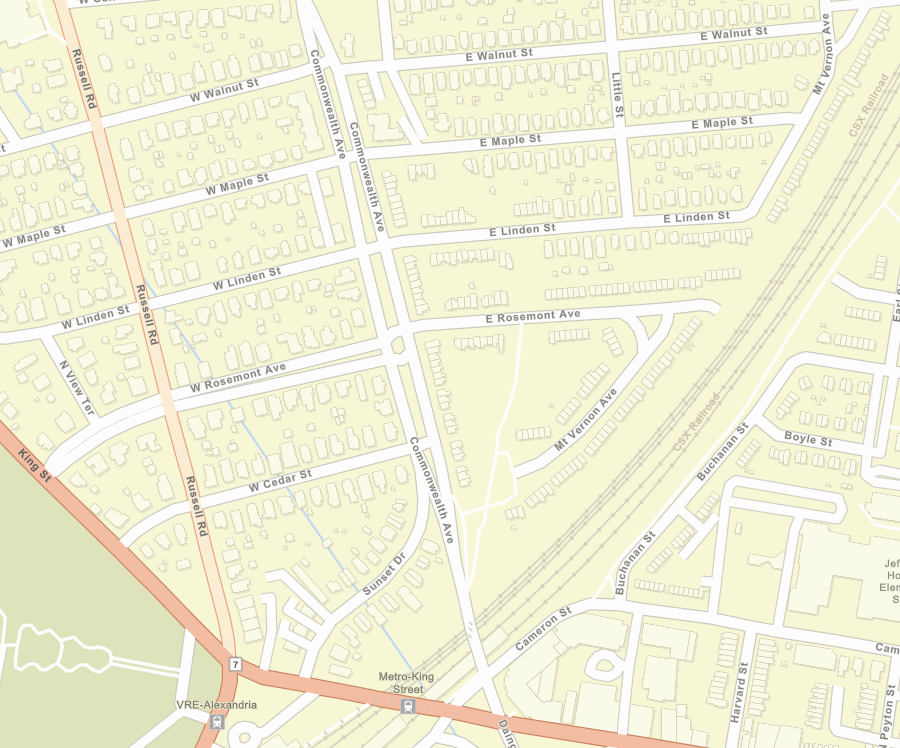
the separate tracks of the Washington, Alexandria, & Mt. Vernon Electric Railway are reflected in the still-divided Commonwealth Avenue
Source: ESRI, ArcGIS Online
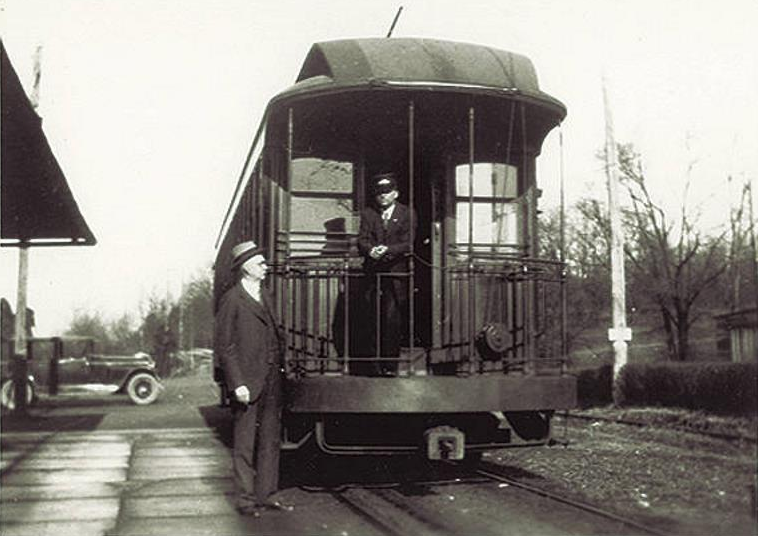
the Washington, Alexandria, & Mt. Vernon Electric Railway connected Rosslyn with Mount Vernon, starting in 1892
Source: Library of Virginia, Visual Studies Collection, Fairfax County Public Library Historical Photographs
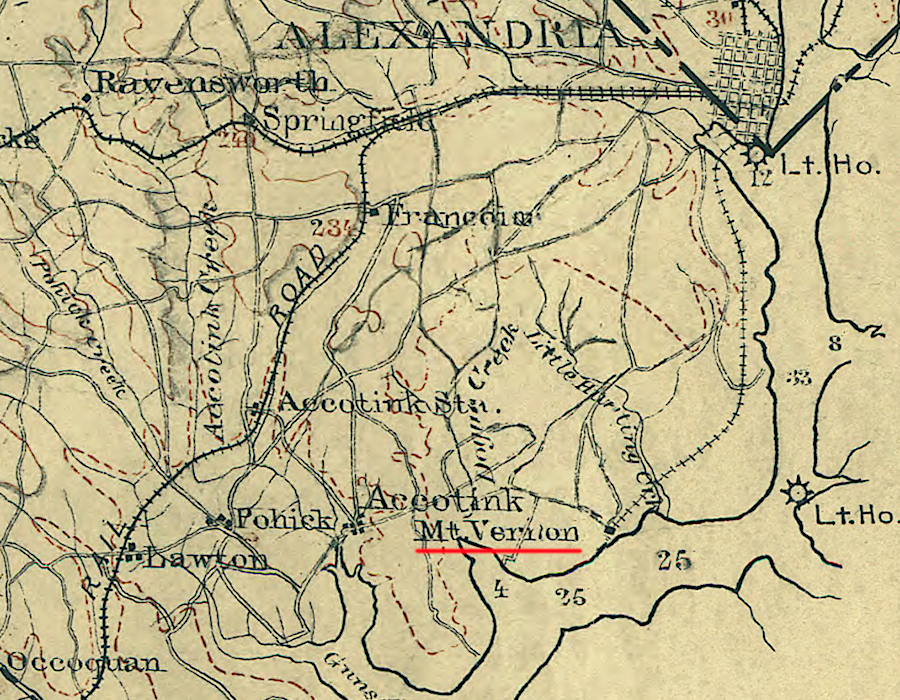
the Alexandria and Fairfax Passenger Railway reached Mount Vernon in 1892, creating a turnaround there which still survives
Source: Library of Congress, Map of northern Virginia (1894)
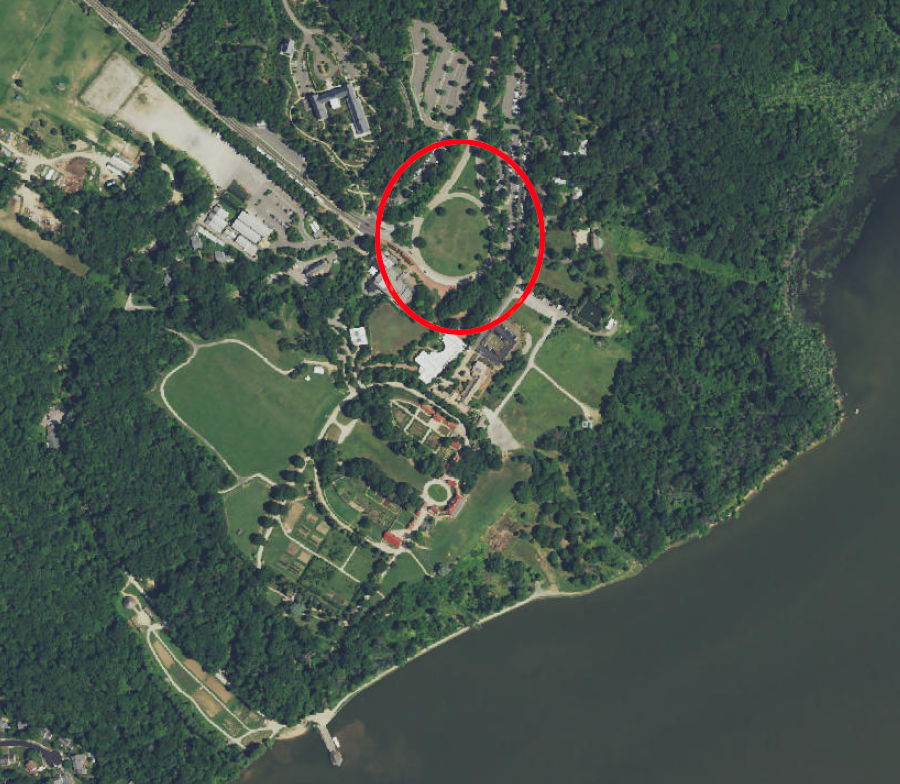
the George Washington Memorial Parkway opened in 1932, replacing the tracks of the Washington, Alexandria, & Mt. Vernon Electric Railway at the Mount Vernon turnaround
Source: US Geological Survey (USGS), Mount Vernon, VA 1:24,000 topographic quadrangle (2019)